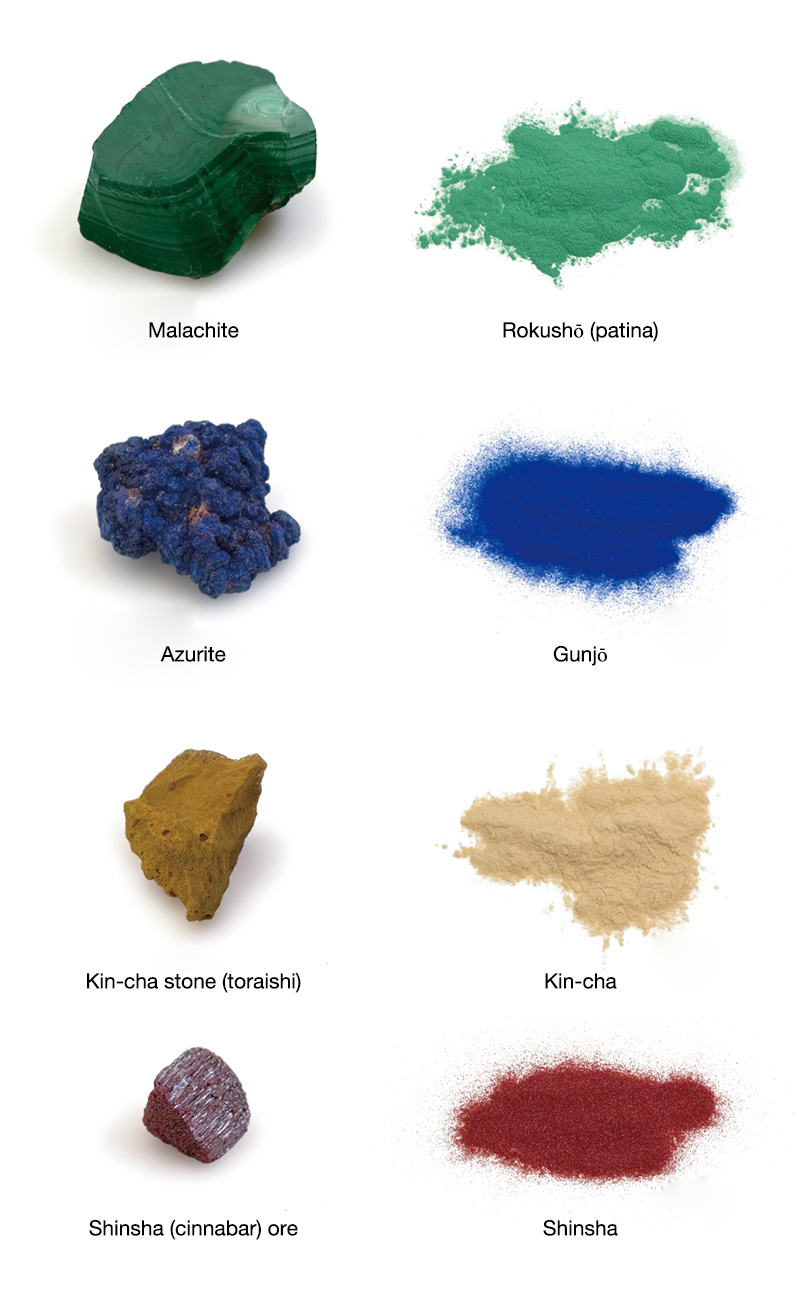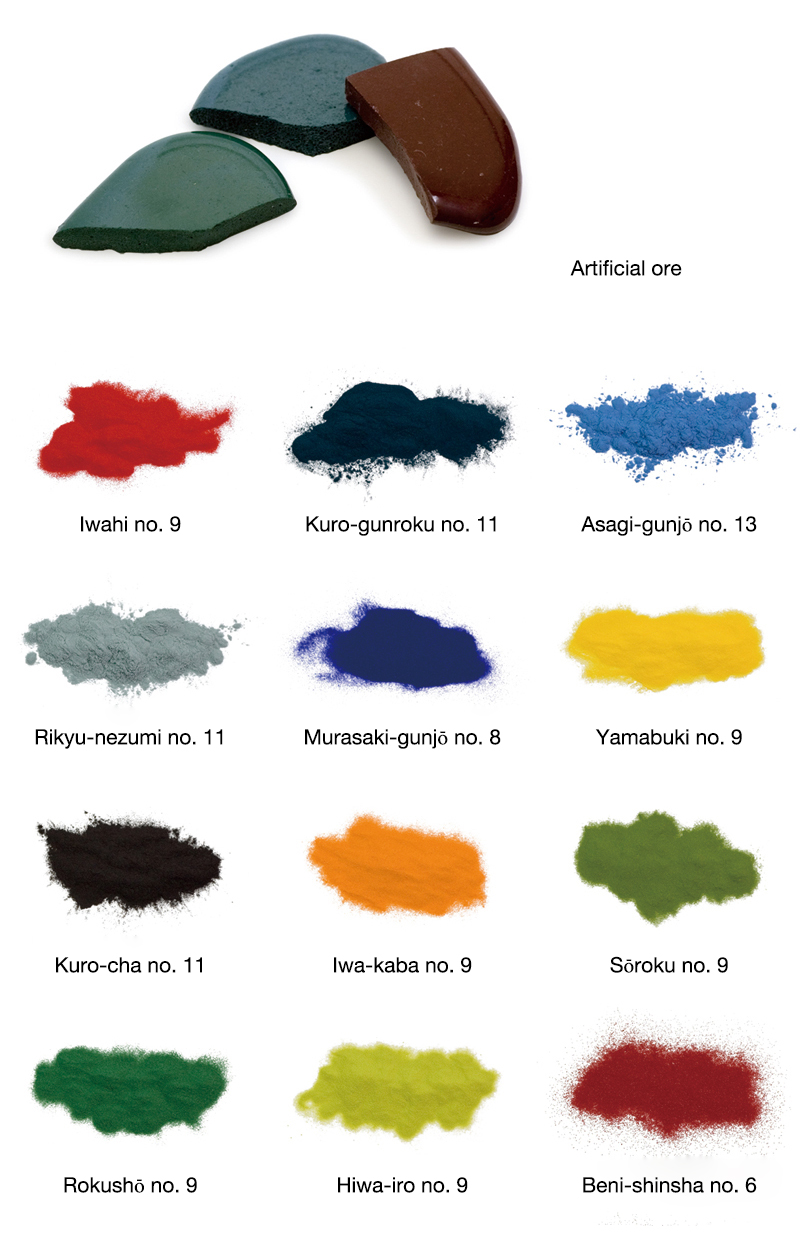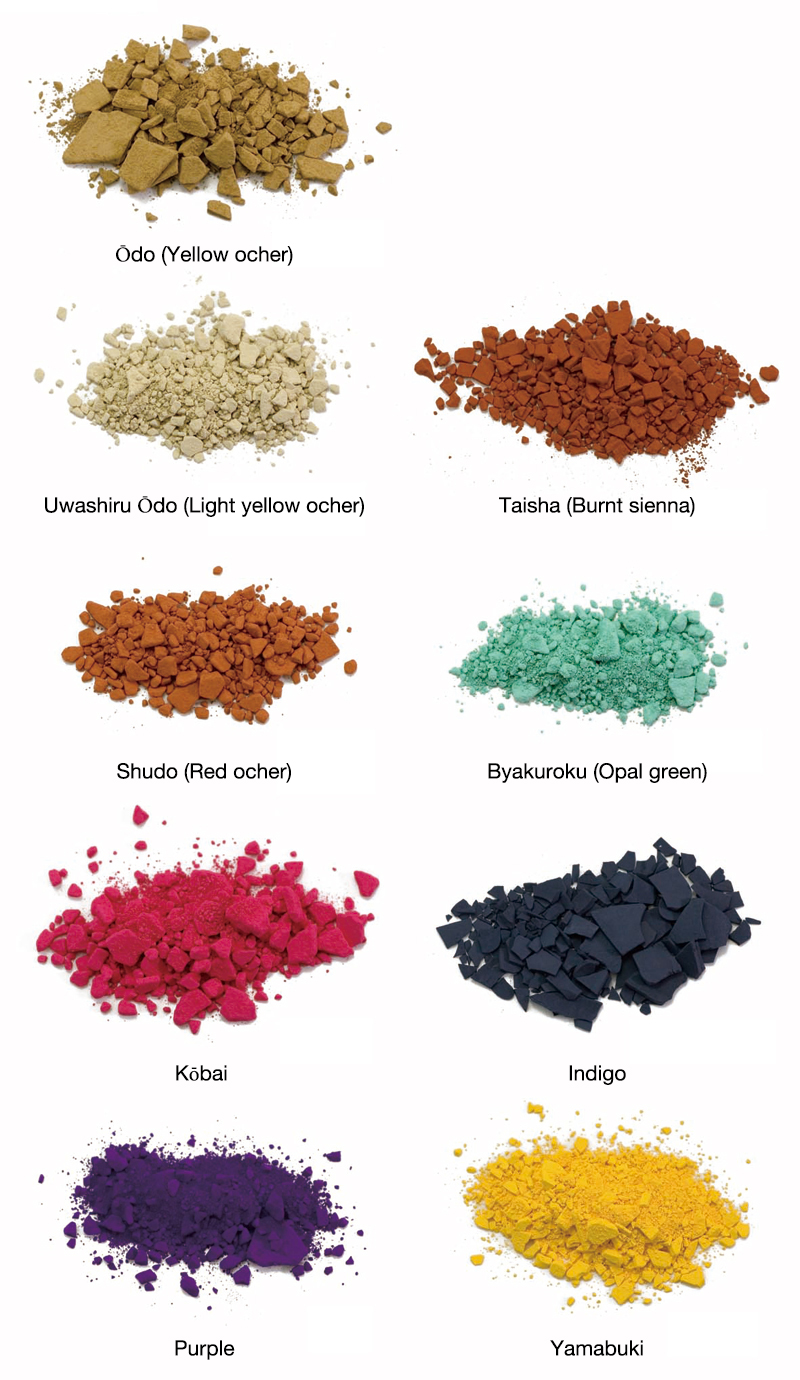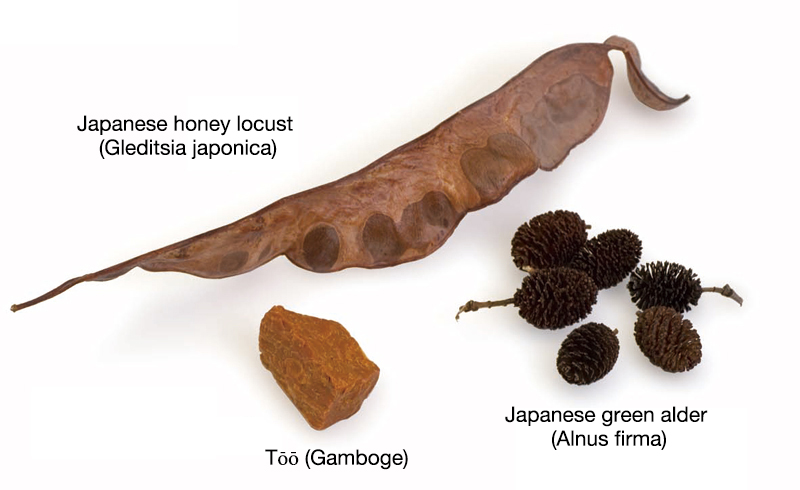Nihonga Paint
日本画絵具
Nihonga-enogu
CATEGORIES
Since ancient times, humanity has used mineral ores, soil, animals and plants in the natural environment around them to produce coloring materials. This original form of paint has been handed down to the present day in the form of nihonga paint. In modern times, this has been supplemented by artificial paint because natural paint is rare and also to offer a wider choice of colors. Normally, “paint” refers to a mixture of a colored pigment and an adhesive medium. With nihonga paint, on the other hand, the colored pigment is the paint so the paint itself has no adhesive properties. It is fixed to the support by the glue in the glue solution used during production.
There are many types of nihonga paint and because they each have different properties, it is important to understand their characteristics.
Iwa-enogu made of minerals is a beautiful paint which comes in a sand-like powder. Suihi-enogu is made from mud and spreads well as it consists of fine particles. Iwa-enogu and suihi-enogu are also produced artificially and are available in a variety of colors. Gofun made of shells is a white paint with fine particles. Vermilion containing sulfur and mercury, and minium which is a product of lead, are artificially-made compound pigment. Coral pigment made by grinding remains of dead coral polyps, and cochineal pigment extracted from insects by that name that live on cacti, are examples of pigments made of insects and animals. Plant-derived types include indigo, a product made by turning dye into pigment; pigments extracted by boiling the seeds of trees such as Gleditsia japonica and Alnus firma; and gamboge, which is a sap of the Garcinia tree. Water paint is made by kneading pigment with a medium such as beeswax or gum Arabic, and is suitable for sketches due to its weak fixing properties. It can be used by simply dissolving in water. It is sold as dry cakes in rectangular plates (gansai), round plates (teppatsu) and in bars (bo-enogu).
Just one color should be used on a single palette dish. This is because in Japanese paintings colors are produced by overlaying one color over another. To retain the paint’s fixing properties and to improve color development, mix the paint with a strong glue solution for the undercoat and then gradually use a more diluted glue solution as you move on to the top coats. Also, a strong glue solution should be used for paint with coarse particles and a weaker solution for those with finer particles.
Nihonga paint can be purchased at art supply stores that handle Japanese art supplies.

- Natural iwa-enogu (mineral + paint)

- Contemporary iwa-enogu (materials + paints)

- Synthetic iwa-enogu (materials + paints)

- Suihi-enogu (Mud Pigments)

- Gofun
 Weathered oysters (Raw material for gofun)
Weathered oysters (Raw material for gofun) - Compound Pigments

- Animal-derived Pigments (Ingredients and Pigments)

- Plant-derived Pigments

- Water Paint

